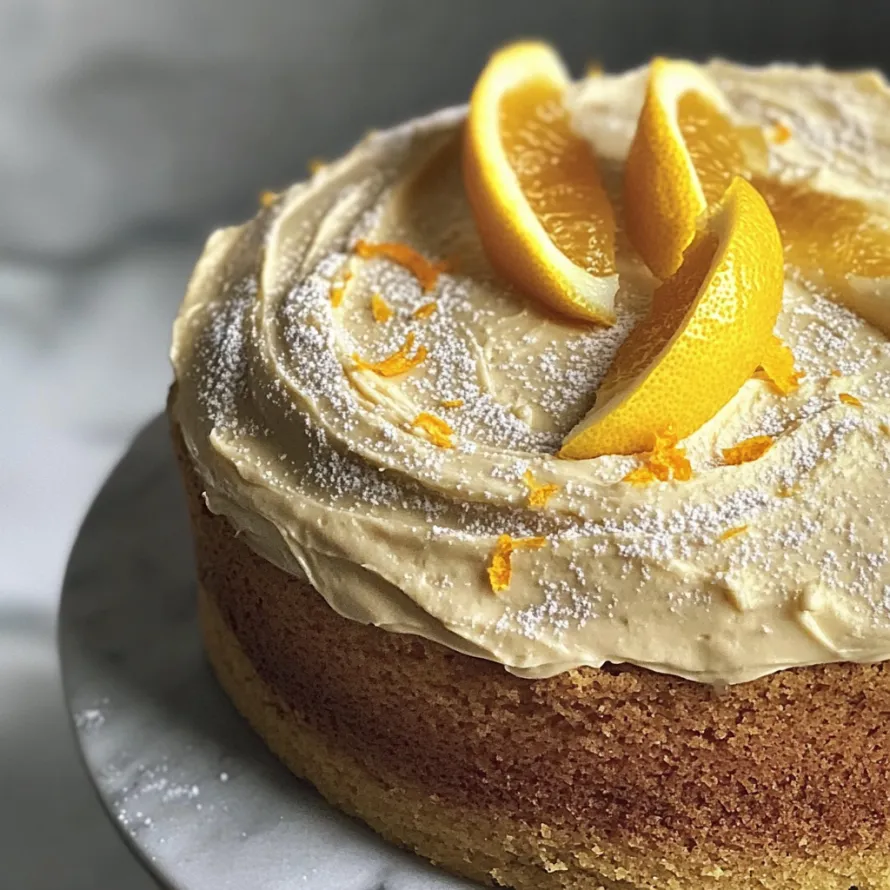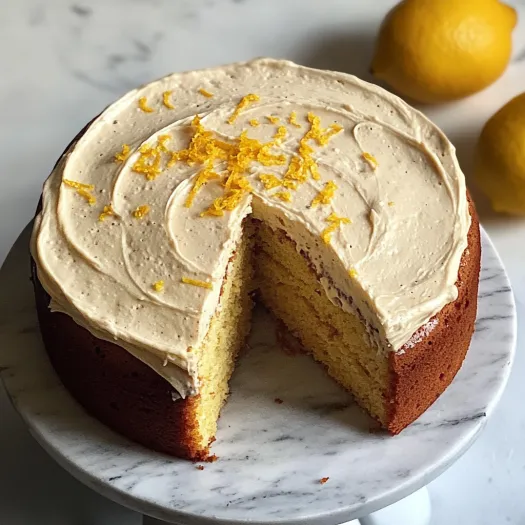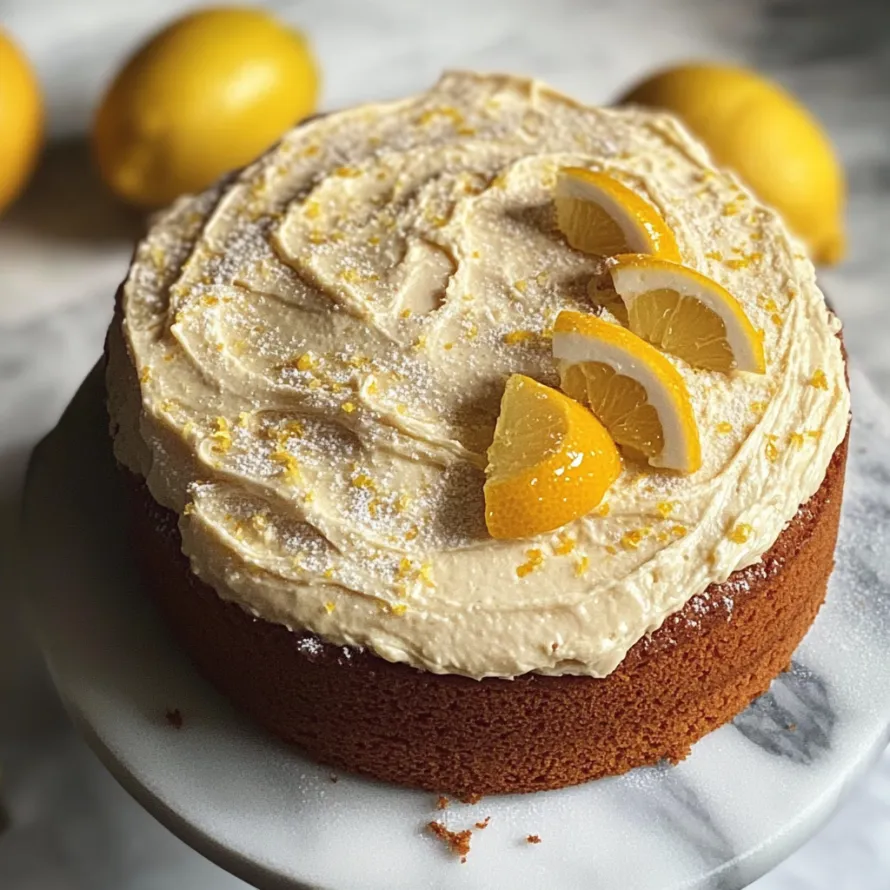 Pin
Pin
This moist olive oil cake topped with brown butter frosting turns basic cupboard staples into an upscale sweet treat that mixes nutty, citrusy, and sweet notes perfectly. Whenever I whip up this cake, people can't believe that olive oil makes such a damp, tender cake with light fruity hints.
I first baked this for my mom's birthday after she came back from Italy. The zingy citrus reminded her of sunny Mediterranean days, and now we make it for all our special events.
Ingredients
- Granulated sugar: Mixed with fruit zest for an amazing scented base
- Olive oil: Keeps everything juicy with subtle fruit flavors; grab a nice extra virgin for best taste
- Sour cream: Makes the cake super soft with a bit of tang against the sweetness
- Fresh lemon and orange zest: Give the whole cake a lift; pick fruits with smooth skins for maximum flavor
- Butter: For topping; needs careful browning to get that awesome nutty flavor
- Powdered sugar: Must be strained to get silky smooth topping without lumps
Step-by-Step Instructions
- Start With Sugar Magic:
- Rub the citrus zests right into your sugar using your fingertips. This pushes out all the good oils and makes super fragrant sugar that'll flavor your whole cake. The sugar gets a bit damp and clumpy from the oils which is exactly what you want.
- Mix Your Wet Stuff:
- Beat the eggs, sour cream, olive oil, vanilla, and salt into your scented sugar for a full two minutes. This adds air and blends the fats and liquids together. You'll notice it gets lighter colored and a bit fluffy. Don't cut this step short.
- Add The Dry Parts:
- Gently fold in your sifted flour, baking soda, and baking powder using a rubber spatula. Use smooth motions from the bottom up, turning as you go. Just mix until you don't see dry spots anymore. A few lumps from air pockets are good.
- Bake It Right:
- Put your mix in the pan and bake for 30 minutes before turning the pan for even color. This cake gets a lovely gold crust while staying super moist inside. Turning helps spread the heat evenly. It's done when a toothpick comes out clean from the middle.
- Make The Butter Special:
- Watch your butter as it changes. First it melts, then bubbles like crazy, then gets quiet before the good stuff happens. The milk bits drop to the bottom and start to toast. Keep gently stirring until you see golden bits and smell a nutty scent. Takes about 5-8 minutes total.
- Whip Up Amazing Frosting:
- Let your browned butter cool until spreadable, then mix with sifted powdered sugar and vanilla. You want it smooth but thick enough to hold shape. Add cream bit by bit until it's silky but not runny.

I think the brown butter frosting really makes this cake special. I found out how good it was by mistake when I overcooked some butter for another dish and used it anyway. The toasty flavor works so well with the olive oil that I now brown butter for everything from cookies to pasta.
Why Citrus Sugar Works Wonders
Rubbing citrus zest into sugar before adding other stuff makes a huge difference in how flavor spreads. The sugar grains soak up all the oils from the zest. This way, the citrus taste gets into every bite instead of being bunched up in spots. Try different citrus based on what's in season: bergamot, Meyer lemon, or blood orange all taste amazing.
Keeping It Fresh
This cake actually tastes better after a day as the flavors mix together. You can bake it up to two days before you need it and keep it wrapped tight at room temp. Make the frosting a day ahead and store it in the fridge; just warm it up and mix again before spreading. Once you've frosted the cake, keep it cold but let it sit out about 30 minutes before serving so it tastes and feels just right.
Serving Ideas
For a laid-back brunch, cut thin slices and serve with fresh berries and coffee. For fancier events, I like to add candied citrus pieces, fresh herbs like thyme or rosemary, or just dust with powdered sugar. The cake goes great with sweet wines, especially Vin Santo from Tuscany or a late harvest Riesling.

With its amazing flavors and fancy look, this olive oil cake will soon be your favorite dessert for any get-together.
Recipe Q&A
- → Is olive oil replaceable in this cake?
Sure! You can switch olive oil with a neutral option like vegetable or canola oil. Just know that the result won’t have the same fruity twist, as olive oil is central to its unique taste.
- → What does properly browned butter look like?
You’ll notice a toasty smell and see golden or amber tones with brown flecks (milk solids). As soon as the bubbling quiets and the aroma turns nutty, take it off the heat—it browns fast!
- → Does this cake taste better the next day?
Definitely! Giving it a day lets the citrus and olive oil mix perfectly. You can bake the base two days ahead and wrap it airtight. Frosting can be prepped a day before and re-whipped before decorating.
- → What kind of olive oil should I use?
Choose an extra virgin olive oil with a fruity or mild flavor. This enhances the cake’s character all around. Avoid very intense or bitter oils—they could overpower everything.
- → How do I keep leftover slices fresh?
Place leftovers in a sealed container in the fridge for up to five days. Let it return to room temperature before serving. You can also freeze (without frosting) for up to three months.
- → Can I skip the citrus zest?
The zest keeps it lively and balances the richness. If you skip it, you’ll lose that extra kick. A good alternative is a teaspoon of almond extract or a splash of orange blossom water for some depth.
